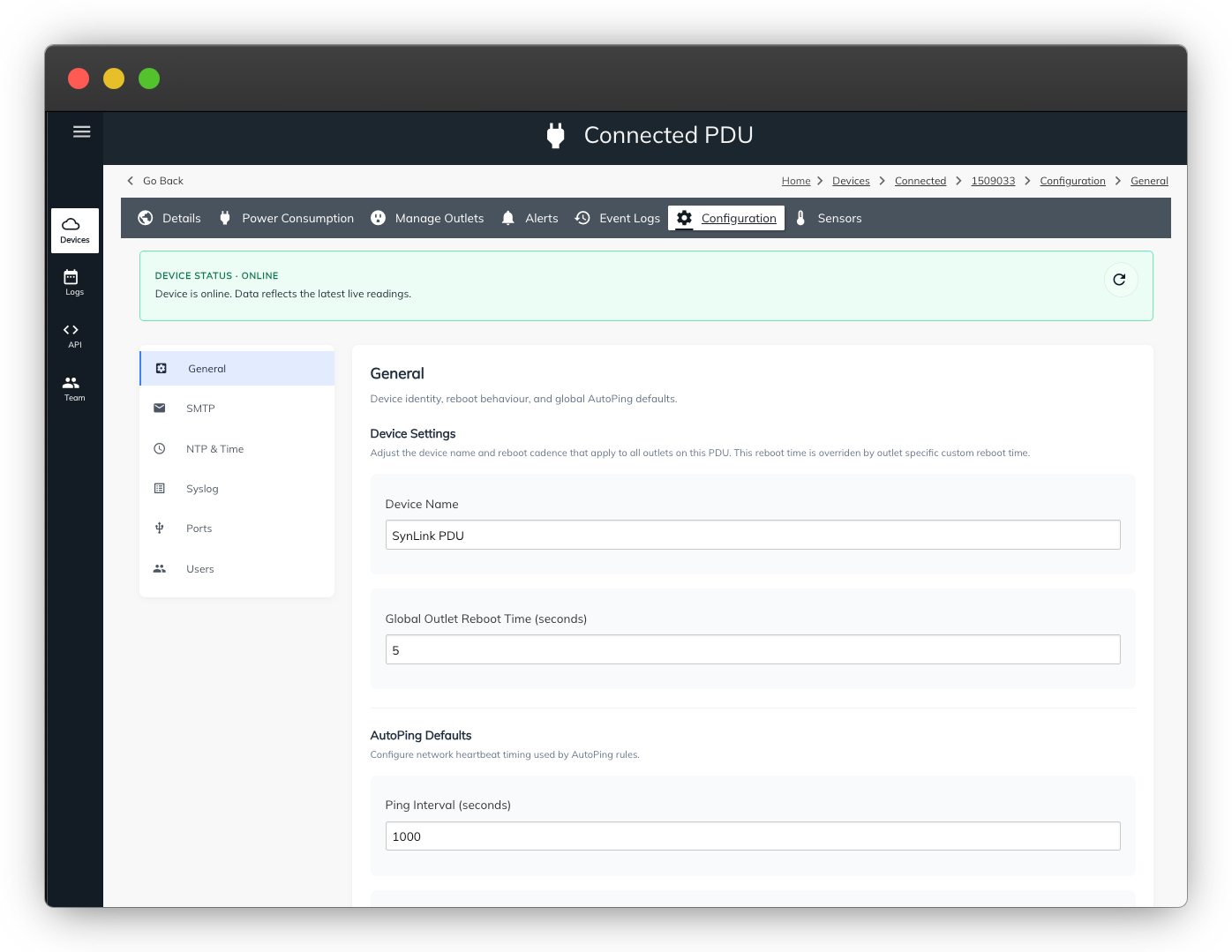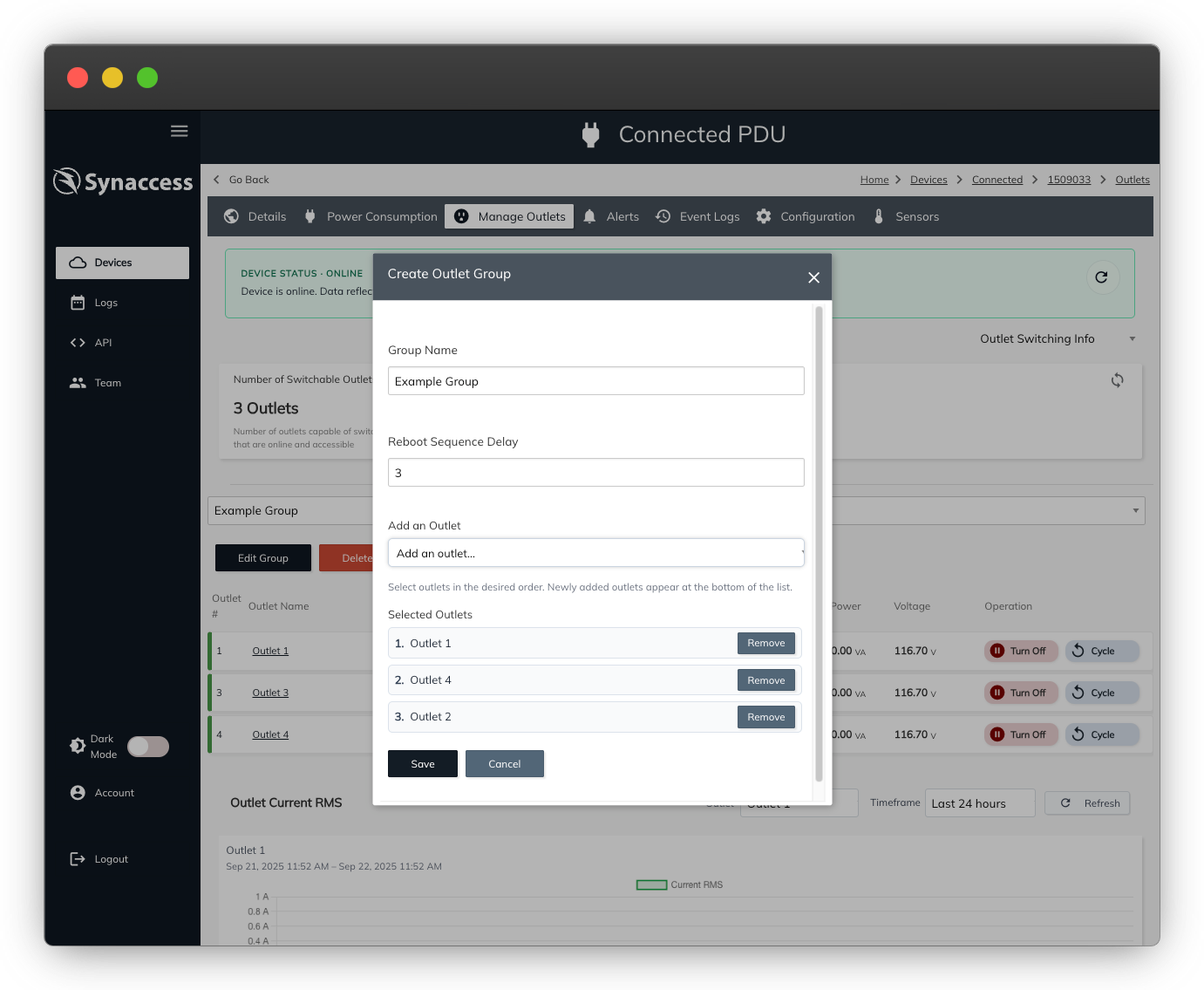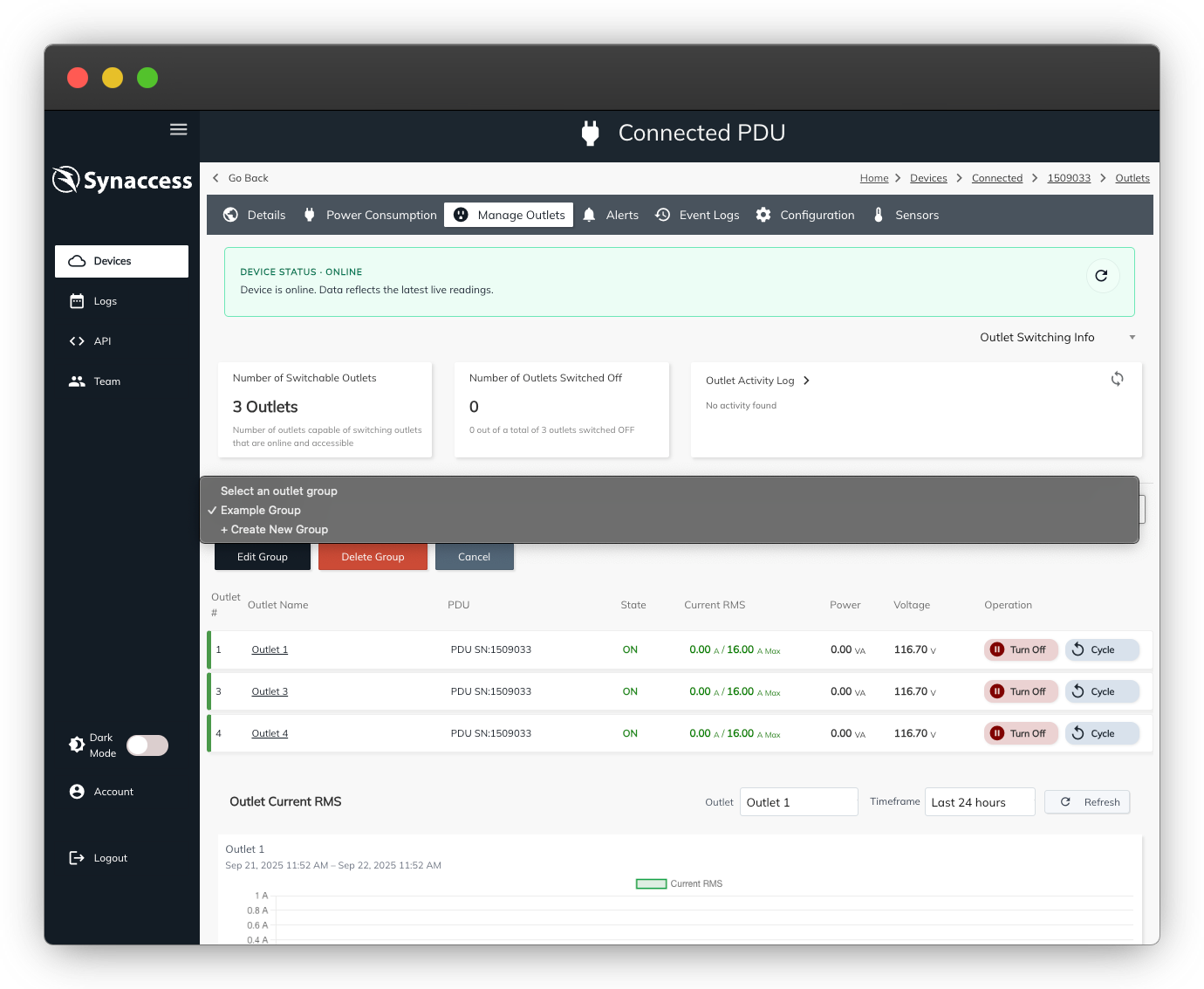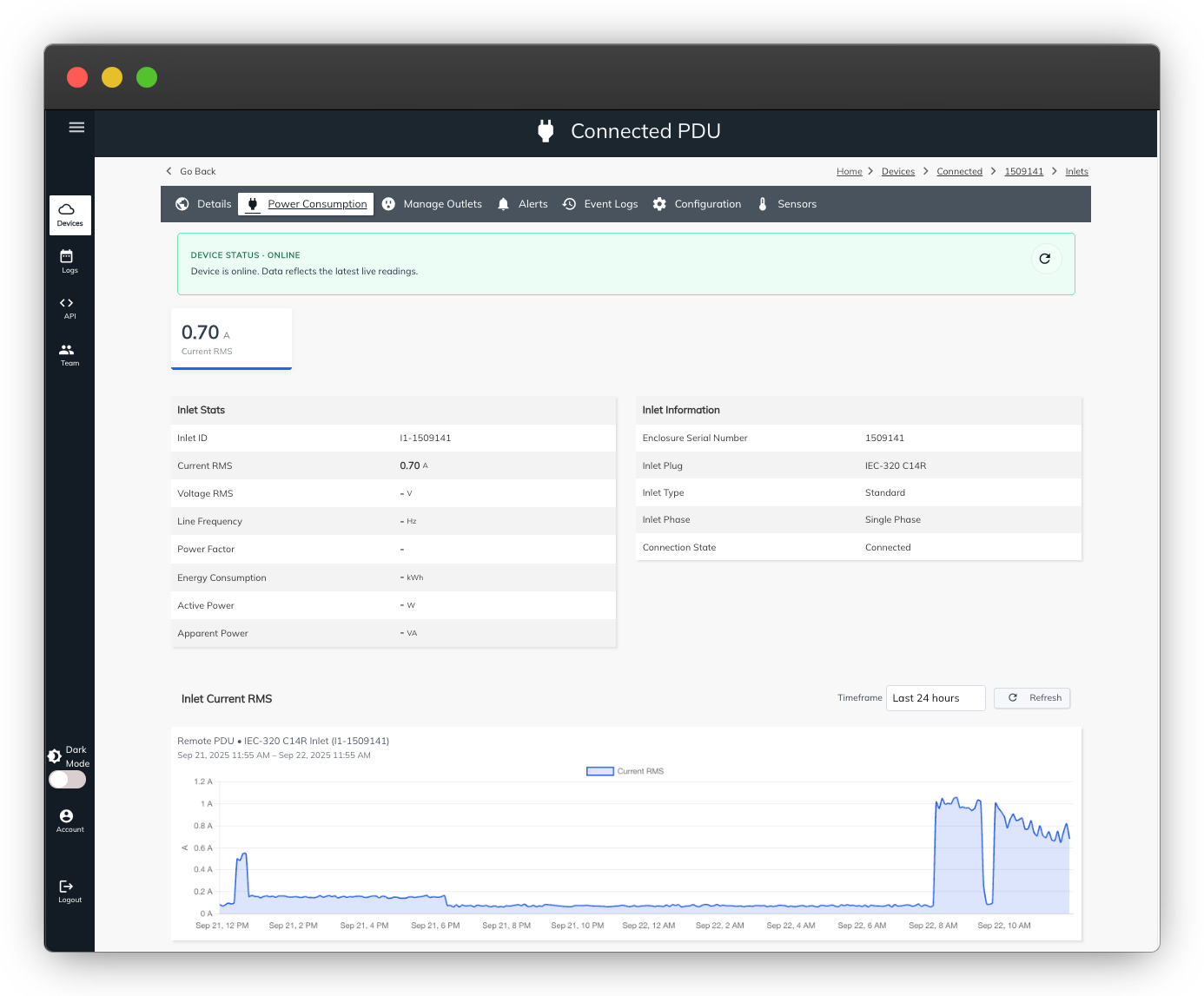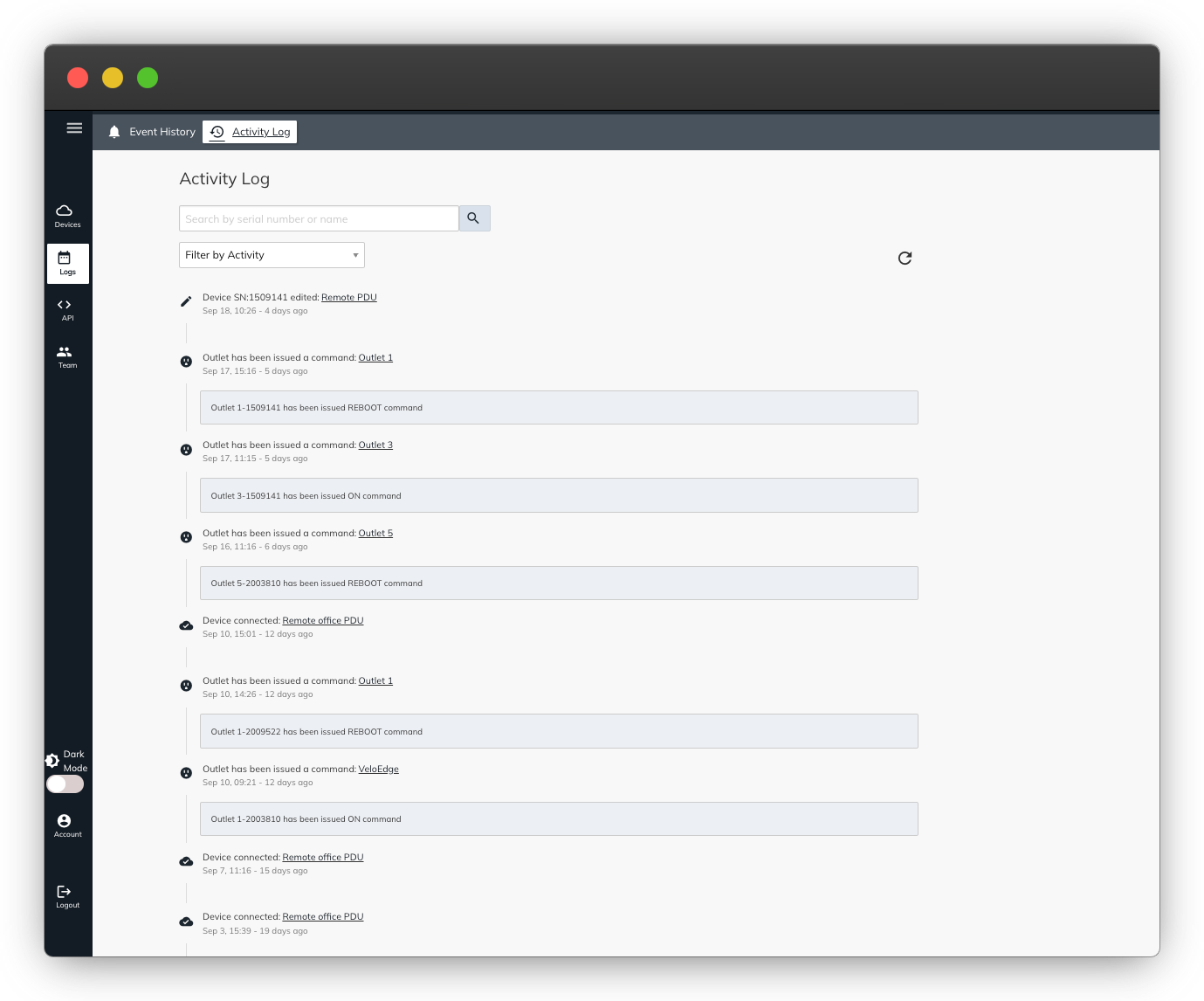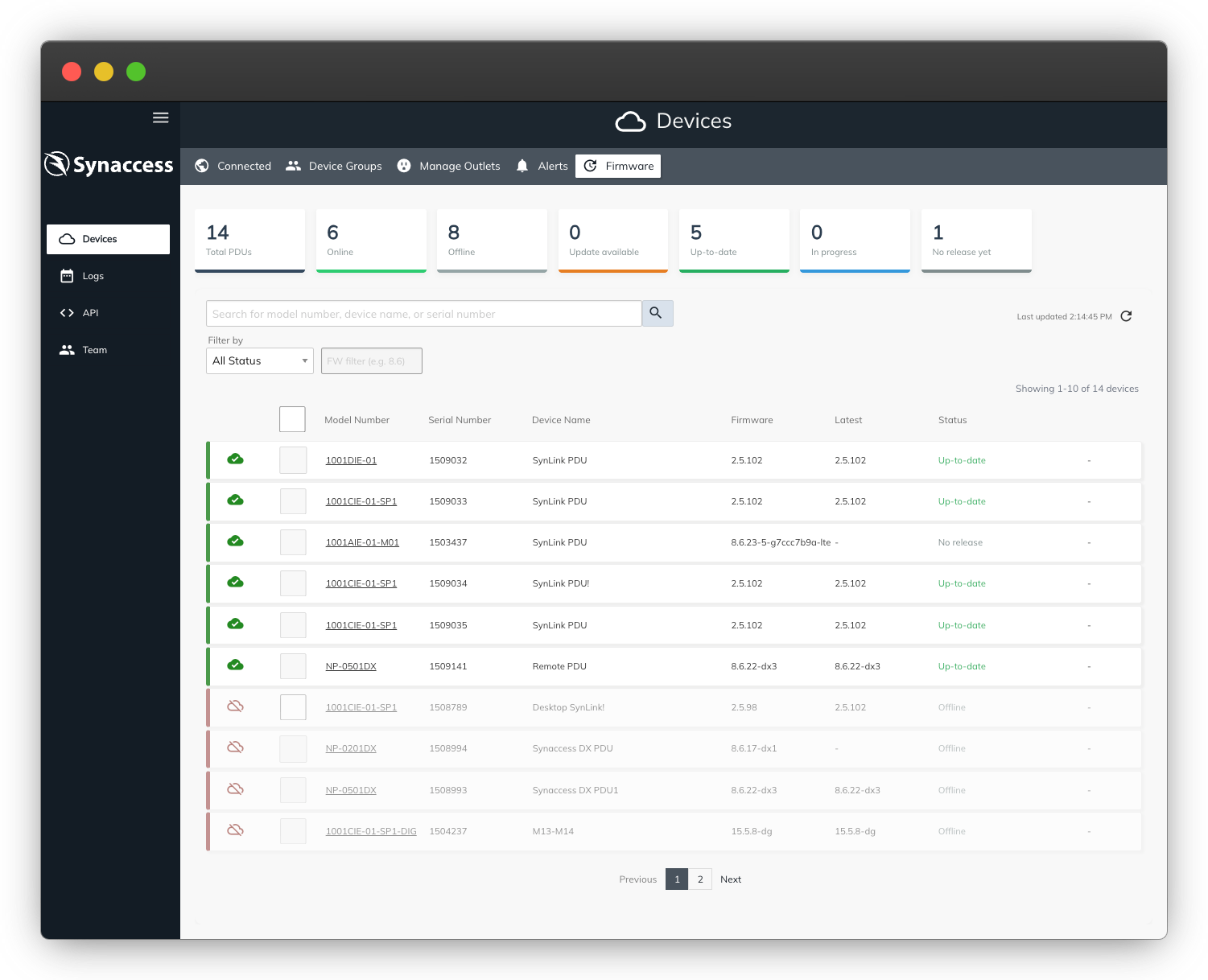Release date: Late october
Device and outlet management is now more flexible, provisioning workflows are smoother, and on-prem customers gain a hardened containerized deployment option.
New
- Offline provisioning – Edit outlet names, device names, and other core settings even while a device is offline. Changes are queued and synced automatically once the device reconnects.
- Activity log sync – Offline edits appear in the activity log, so administrators can see when settings were staged and when they were applied.
Improved
- Refined UI across user settings, team management, and configuration pages for a more consistent look and smoother navigation.
Fixed
- Addressed scattered UI alignment issues across settings pages.
Why it matters Provisioning and setup are faster, even when devices aren’t online, while enterprises deploying on-prem can meet strict security requirements out of the box.
